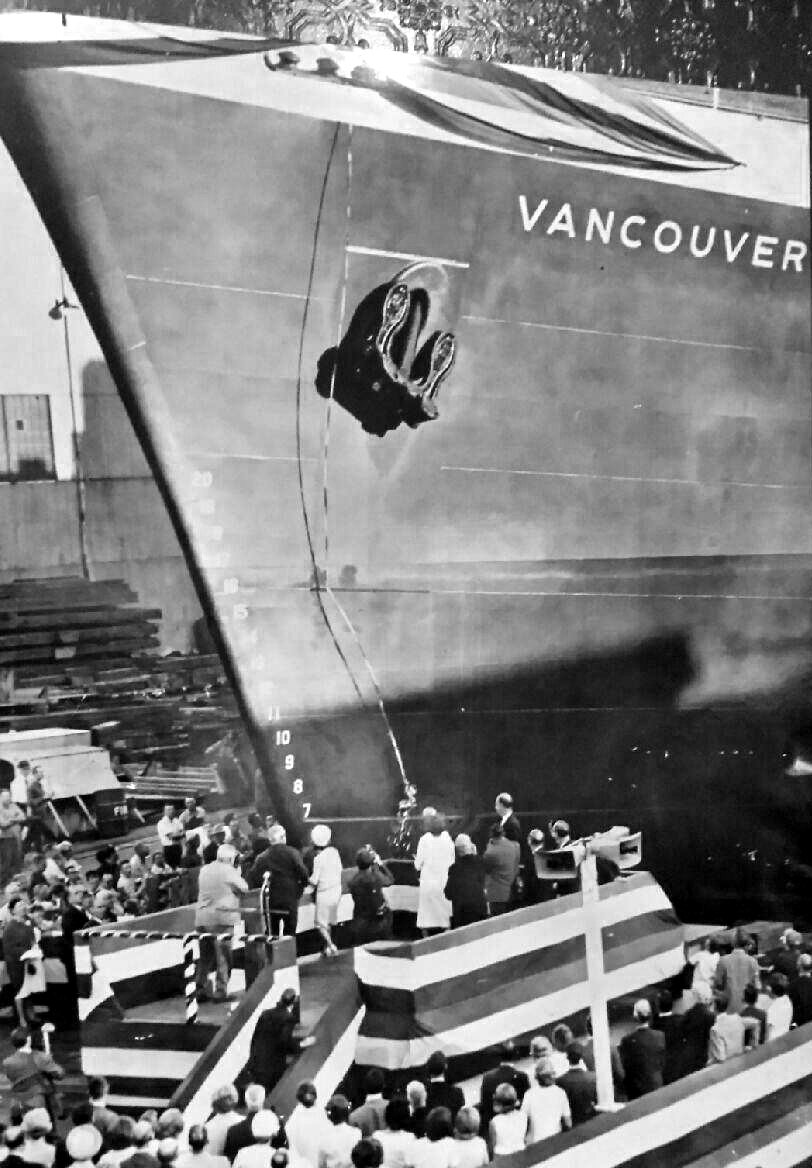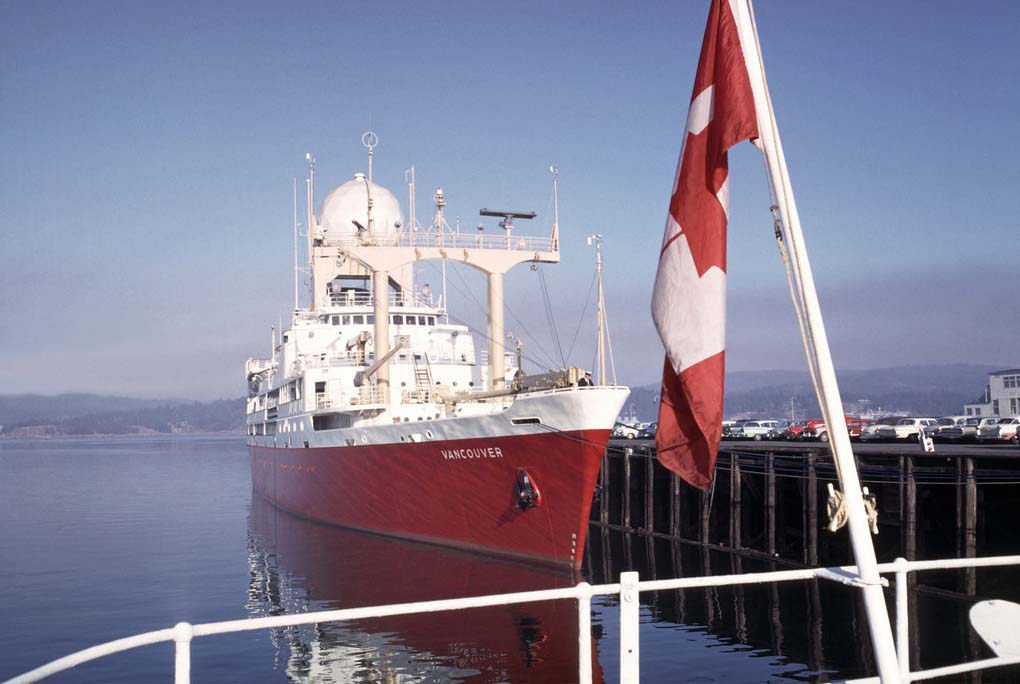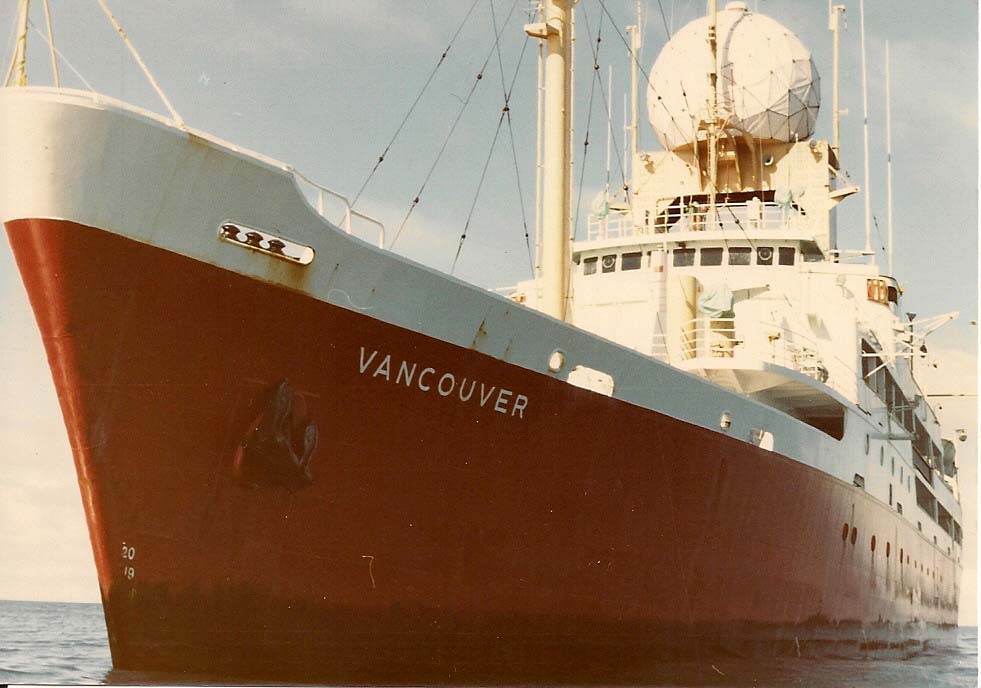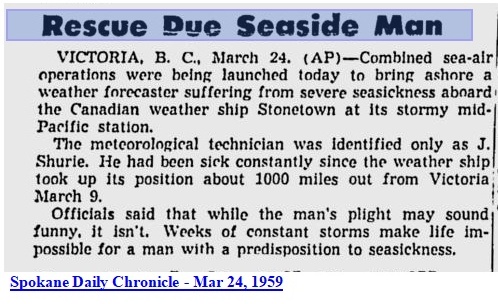 |
| Vancouver's launching at the Burrard shipyard. (Photo from the collection of the Rusty Gull Pub in North Vancouver) |
 |
| Vancouver's launching at the Burrard shipyard. (Photo from the collection of the Rusty Gull Pub in North Vancouver) |
 |
| August 1966: Vancouver alongside her wharf in Esquimalt. (From the Peter Willms collection) |
 |
| In this undated photo, Vancouver is on-station. It was very rare to have the sea this calm. The photo was taken near the end of a seven week patrol. That is deduced by the height of the green slime atop the water line. It shows that the ship has become lighter as the consumable stores (fuel oil, food etc) were used up. (From the collection of Harold Hammerer) |
April 1971: These photos of heavy seas were taken from C.C.G.S.Vancouver. Holding the exact position of 50N 145W for Ocean Station Papa. was impossible (and more so in rough seas) so the system made an allowance for it. The Ocean Station was actually a big square, 100 miles long on each side and divided into 10 mile squares. The expectation was for the ship to be somewhere within the big grid square but preferably in the centre. The vessel actually drifted around when "on station". Her position would only be corrected if it was considerably off the center of the grid.
There was aeronautical radio beacon on board (down in the 300-400 kHz band) and it was tied to a Morse keyer in the radio room. Each 10 mile square had a two letter identifier and this was set into the keyer on instructions from the wheelhouse. This identified the ship's position to other vessels or aircraft. In the early days, Quada and Vancouver relied on Loran 'A' to fix their position but reception at station Papa was right on the edge during the day and at night, the skywave made it unusable.
Later on, Quadra and Vancouver used Sat Nav and Omega receivers for navigation. This was a tremendous improvement. One of the mates, Cecil Cheng, could actually 'sail' the ship to keep on- station. He would put the wind onto the slab side of the vessel so it would move in the desired direction. If the weather conditions became too severe, the vessel would steam slowly into the wind and seas. There were times when the weather ships came right off the grid square but would always scuttle back when conditions permitted it.
All photos in this table by Dennis Engemoen
 |
| Although this happened aboard Stonetown and not Vancouver, it nevertheless underscores what heavy seas can do to a person. (Submitted by John Gilbert) |
CCGS Vancouver awaits her fate at a shipbreaker's yard in China. (Photo by Tim Bowles) Credits and References:
1) Frank Statham <fstatham(at)gmail.com>
2) Dennis Engemoen <dhengemoen(at)shaw.ca>
3) Terry Sampson <Terry.Sampson(at)dfo-mpo.gc.ca>
4) John Gilbert [johngilber@gmail.com]
Back To Weather Ships April 2/23